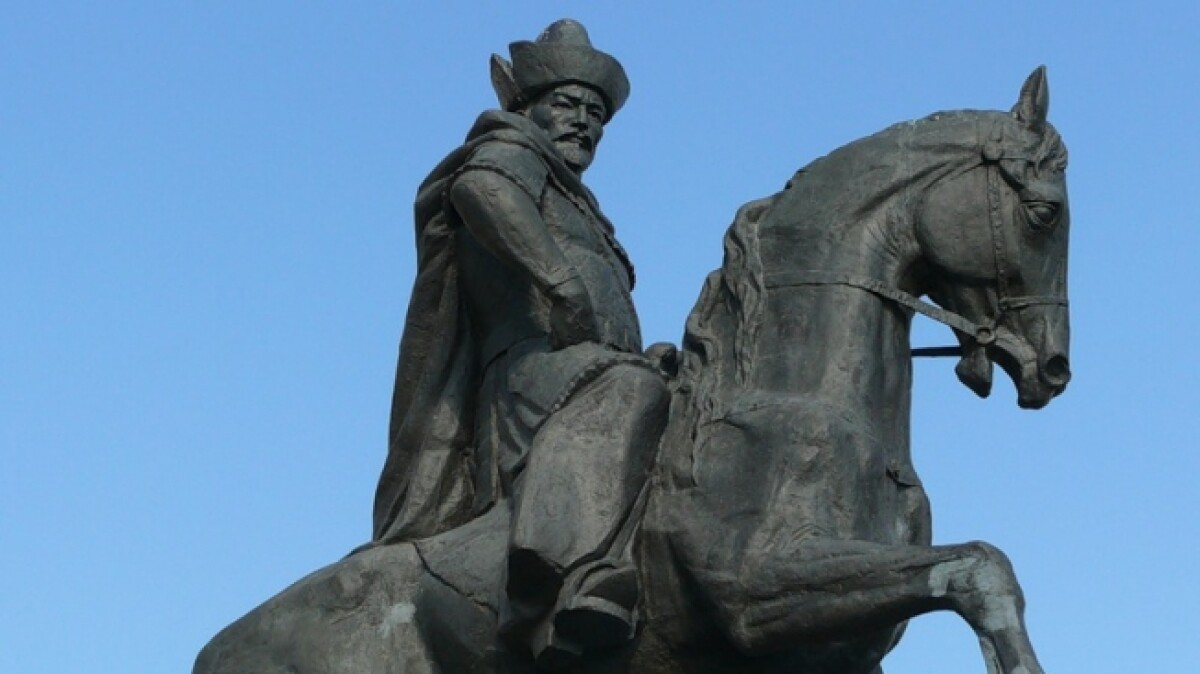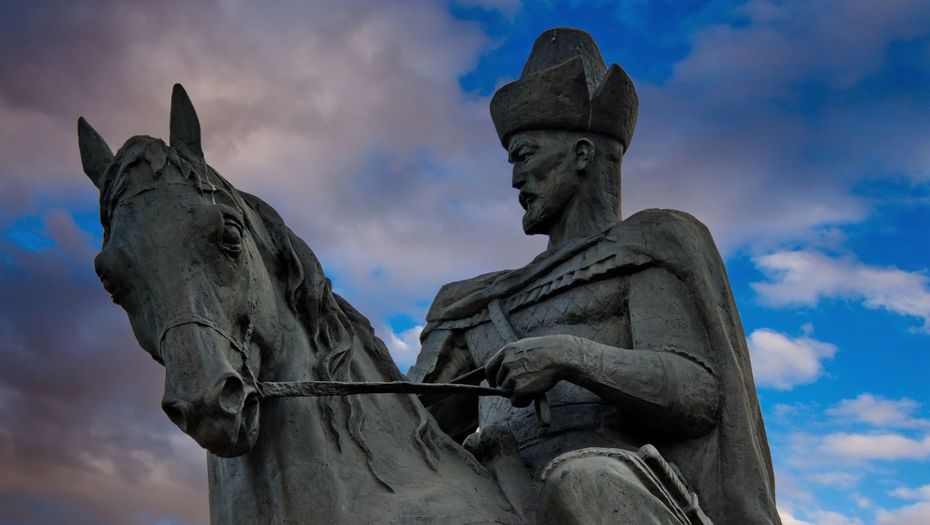
Khan Kenesary Kassymov is the last Qazaq sultan, grandson of Abylay Khan and direct descendant of Genghis Khan, the leader of the most massive uprising for the independence of Qazaqstan in the 19th century.
Born in 1802 in the Akmola region, Kenesary was the youngest child of six children in the Kassym-tore family and his eldest wife Aykumis, the daughter of the Dzhungarian khan Galdan Tseren. On the maternal line, Kenesary Kassymov came from the Choros dynasty, and on the paternal line, from Genghis Khan dynasty.
His father Kassym, the son of a Kalmyk woman, claimed the khan title after the death of Abylay Khan, who was in turn recognized as a khan by all Qazaq Zhuzes (“Zhuz” represents the main tribal division within the ethnic group of the Qazaqs).
The representatives from the Middle Zhuz chose his half-brother Uali as a khan, but his personality was not popular among the Qazaqs. Therefore, Kassym believed that he had the same legal right to the throne, like his father.
Kenesary, the son of Kassym was brought up as a son of the Sultan. He worked on his military and managerial skills, and showed himself as an exceptional leader.
After Uali’s death in 1821, Kassym became the main contender for the Khan title, but at that very moment Tsarist Russia abolished the Khan government and began to carry out administrative reforms in the country. As a result, Sultan Kassym and his sons headed a national liberation uprising against those changes.
Sultan Kassym spent all his life in the struggle to restore the power and state foundations that existed during his father's life. Almost all the sons of Kassym shared his views; they participated in the struggle from an early age.
At the age of 22 Kenesary joined the fighting, led by his elder brother Sarzhan. Participation in the liberation movement, aimed at overthrowing the tsarist Russian regime in Qazaqstan, the strong leadership skills of Kenesary allowed him to take a key position in the political struggle.
After the murder in 1836 of brother Sarzhan and father in 1840 by the Kokand people, Kenesary began to build his own military-political strategy, looking for allies among the clans of the three zhuzes.
In the summer of 1837, Kenesary and his nephew Yerzhan created a military unit of 300 warriors. Kenesary Kassymov’s rebellion started from the September attack on the Taminskaya and Konyratovskaya volosts. Gradually, the uprising, raised in response to the attack of the troops led by Karbyshev, turned into a full-fledged war.
Starting from 1841, he headed the national liberation movement of the Qazaq people, seeking to restore the Khan's power, abolished by the tsarist Russian government. The congress of representatives of three Qazaq zhuzes, who were from those territories of the country, which retained independence from Russia, in September 1841 declared Kenesary to be a khan, restoring the “de jure” Qazaq khanate. The new Khan declared that the main goal of the movement would be an independence of all territories of Qazaqstan that were not part of the Russian Empire. The uprising began with the burning of the Akmola fortress, in place of which the modern capital of Qazaqstan, Nur-Sultan is placed now. Large groups of Russian troops, as well as Qazaq cavalry units that joined Russia and supported its policy, were sent against the rebels. Despite the enemy predominance, Khan Kenesary was defeated not by the tsarist Russian army. He was betrayed by his comrades-in-arms, because of whom he was captured by the Kirghiz warriors, where he died from their revenge. In this way the uprising was suppressed.
The search for the remains of Khan Kenesary, who was killed in 1847, is still underway. It is believed that the body of the last Qazaq Khan was soon buried in the territory of modern Kyrgyzstan after the death, and the severed head was taken to Omsk as a trophy. According to one version, until the 1930s, Kenesary’s skull was in the city, but what happened to it later is a complete mystery.
For a long time, researchers believed that Kenesary's head could be sent to Kunstkamera, the first museum in Russia (now it is the Peter the Great Museum of Anthropology and Ethnography), but the museum repeatedly stated that they did not have Kenesary's skull. Moreover, in 2004, the official representatives of the museum reported that they did not have any documents confirming that any items belonging to Kenesary Kassymov were in the Kunstkamera earlier.

Kenesary Khan, Photo: informburo.kz
On May 10, 2001, a monument to Kenesary Khan was erected on the bank of the Ishim River in the city of Nursultan. The height of the rider is 7 meters, the height of the pedestal is 6 meters.
The pyramidal form of the composition carries the idea of statehood, demonstrates the power and strength of the young republic. The Kenesary Khan Monument became the first equestrian monument in Qazaqstan of the independence period. The rider on horseback personifies the indomitable movement of the young state to new frontiers, to a brighter future.
In Stalin's time, the figure of the legendary Kenesary Khan was prohibited, Qazaq historians could not do research on him and his legacy. Kenesary Khan was shown as an enemy of Soviet regime. Erection of the monument was driven by the idea to restore a historical truth from the one side, and from the other - to demonstrate a strong will of the Qazaq people to live in independent country. Delacroix once noted that he paints not the sword, but the brilliance of a sword. The author of the monument Nurlan Dalbay tried not just to paint a horse, but he wanted to show such abstract concepts as force, spontaneity, a strong will for victory. His characters exist in the world of heroes. The image of Kenesary is not just a portrait of the legendary Khan, but his figure is a personification of a powerful and reasonable power. Therefore, a reference to the classical tradition, the generalization and idealization of the image is the conscious and natural choice of the author.
Kenesary Khan, like a rock, is immovable and adamant. His overproud build, calm posture reinforces the impression of unshakable strength of spirit, embedded in the portrait characterization of the hero.
Sculptor made a horse with all the thoroughness and understanding of internal logic. Each vein, each knight of a horse is plastically felt by the author. Therefore, the body of a slender horse evokes a feeling of lively filled form, striking the imagination with its power and pressure.
The sculpture of Nurlan Dalbay as an understanding of the past helps to create those “pillars”, on which the national identity of the Qazaqs are based.
